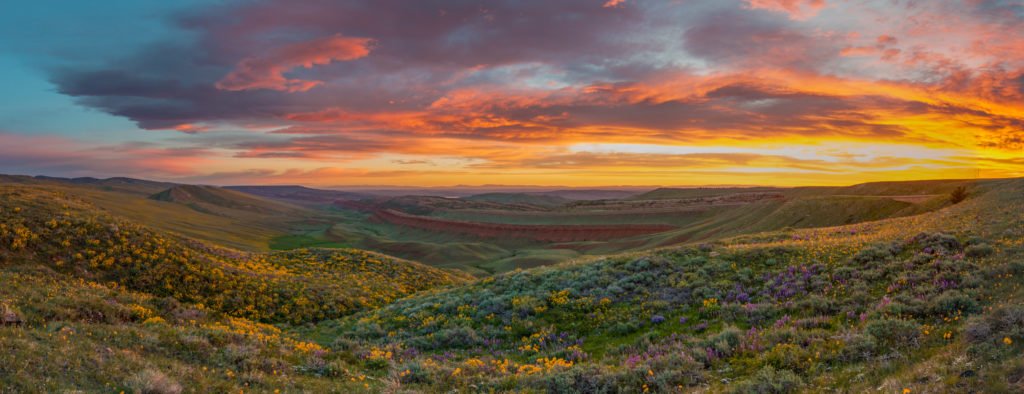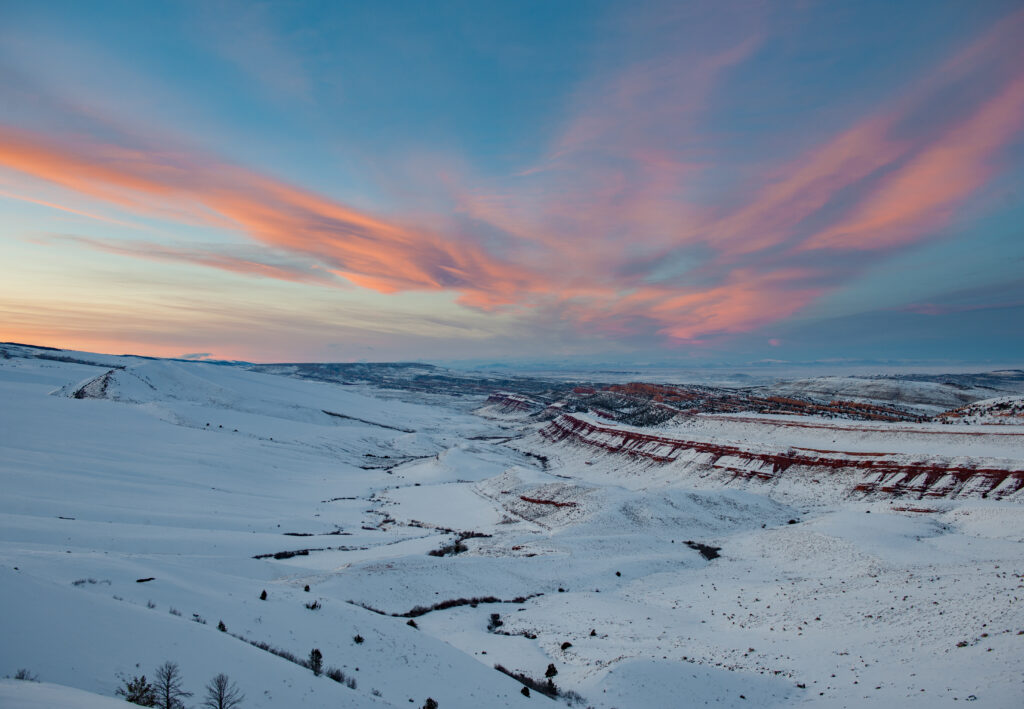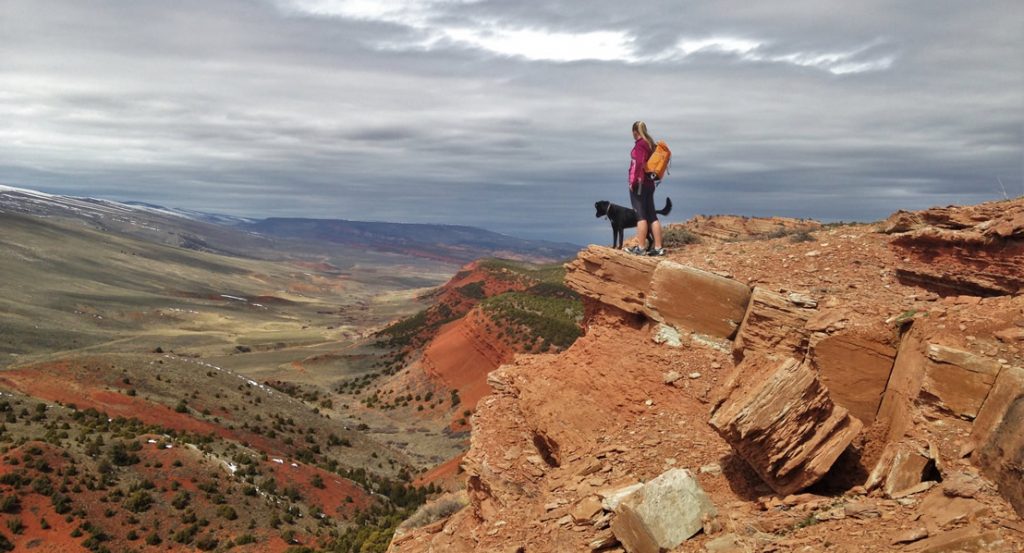June 28, 2019
24 miles south of Lander, Wyoming on Highway 28 is one of the most scenic vistas in Wyoming: Red Canyon.
Red Canyon was formed over 60 million years ago during the uplift of the Wind River Range. As the softer sedimentary rocks tilted, the more easily erodible rocks were removed by the action of water, creating the canyon as it is seen today.

Stop at the overlook at the top of the rim and look out across the canyon. In the spring—usually the first two weeks of June—you will see thousands of arrowleaf balsamroot, phlox, silvery lupine, sticky geranium and more.
Each season has its own palette of colors and light from nature. In the fall, colors change from green to subtle shades of red, orange and amber. In the winter when snow covers the canyon, thousands of elk can be spotted as they feed and winter there.

The long, grass-covered slopes on the west side of the canyon are part of a unit of rocks named the Permian period Phosphoria formation, and the bottom of the canyon and the lower 300 feet of the east side are eroded into the Triassic period Chugwater formation. The bright red color of the Chugwater is due to a great amount of oxidized iron between and on the grains of the rock. It is this coloration that gives Red Canyon its name.

Red Canyon Rim, which forms the east side of the valley is salmon colored Jurassic period Nugget sandstone. This sandstone was deposited during regression of ancient seas. It represents tidal flat and beach sedimentation and was cross-stratified during deposition on ancient back-beak sand dunes.
This National Natural Landmark provides important wildlife habitat for elk, mule deer, and other small mammals and birds.
The Nature Conservancy owns and operates the Red Canyon Ranch in the center of the canyon. Public lands managed by the Bureau of Land Management surround most of Red Canyon’s Ranch land.
Posted in Notes From the Field